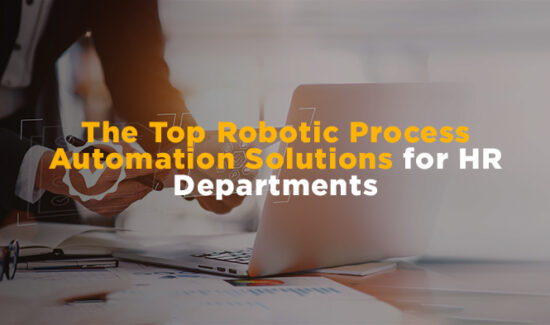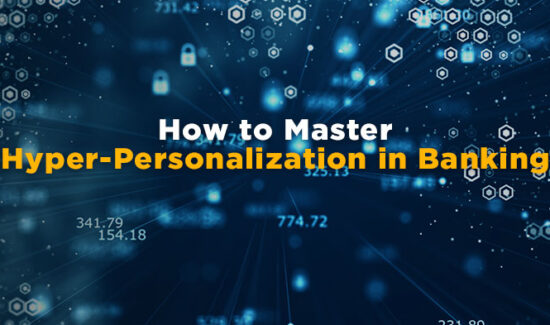The Digital Transformation Hyperloop: What is It, and Why is It Valuable?


As part of Solutions Review’s Contributed Content Series—a collection of articles written by industry thought leaders in maturing software categories—Anurag Shah, the Head of Products and Solutions of the Americas at Newgen Software, delves into the idea of a digital transformation hyperloop, explains why it’s valuable, and how companies can use it in their processes.
Transformation is not a new phenomenon. Every decade arrives with new challenges, and enterprises must find ways to navigate them. And even that is accelerating. Much of what took a decade earlier is now a matter of a few years. Leaders find ways to thrive despite the rate of change. And they do that by transforming themselves in the true sense.
In the case of digital transformation, though, core transformation often takes a back seat, with the conversations dominated by the adoption of digital technologies. It’s not to say that enterprises are not attempting to transform. They are. However, starting a hard-core transformation program is considered daunting and abstract for enterprises, especially for the large ones with heritage and long history.
That’s why it’s commonplace to see enterprises focusing on technologies, even if they do it with business goals in mind. In retrospect, however, the broader digital goals remain elusive. Moreover, the gap widens because the digital world moves faster than enterprises can cope.
The Need to Accelerate Digital Transformation is Real
Enterprises need to find ways to transform and do it faster. The need to accelerate digital has never been more real and urgent. But first, let’s consider why gaps persist despite the best intent and effort.
Let’s take customer experience (CX), for instance. Driven by the demand to go digital and omnichannel, enterprises have invested in technologies that automate the front office with revamped mobile and portal interfaces. Of course, anything in the backend that needed to adapt to the front end has been automated and modernized to the extent required or possible. In focusing on CX, the internal employee-facing activities are often left “as is,” which critically contribute to the services rendered to the customer.
Eventually, prospects and customers still feel dissatisfied because the end-to-end customer journey feels broken despite modernized interfaces. Consequently, they switch to natively digital providers. Enterprises must believe that a great CX starts with an equivalent ergonomic employee experience.
Enterprises would like to take the time to overhaul the backend infrastructure, but time is the proverbial luxury. Large enterprises are challenged by the existing technology infrastructure that forces them to pick their priorities quarterly or annually, preventing a more holistic modernization. That’s why they need a more cohesive approach that allows them to manage these conflicting priorities and drivers efficiently.
The Triumvirate of Digital Acceleration
A coherent approach revolves around what we call the “triumvirate of digital acceleration, “a process that holistically addresses the three pivotal elements:
- Customer Experience: By tying the end-to-end customer journey
- Operational Excellence: Through intelligent automation for speed, agility, and intelligence entailing backend operational processes efficiency
- Business Innovation: Through agile systems and processes and empowered knowledge workers
Prima facie, this doesn’t sound different or new. Enterprises have been trying to address these for ages. However, what makes this approach different lies not in the goals themselves but in how one handles these in a non-compromising and cohesive manner. In fact, the purpose of digital transformation is not even any of these three. The fundamental goal of transformation (leveraging digital technologies) must be to create an enterprise that is better coordinated, responsive, and agile.
When operations are efficient, and processes are agile, an organization can respond to customers and change quickly. And that is the goal. This agility enables the organization to create positive feedback loops allowing digital acceleration, much like a hyperloop.
How Do Enterprises Accelerate Digital the Hyperloop Way?
Let’s recall the primary deterrent for enterprises in accelerating digital. The challenge is not as much in capability, intent, or investments. It is primarily owing to the technical debt and the silos of systems and processes. Bridging these silos at operational and systemic levels needs a platform approach. A digital transformation platform that can coexist with the existing core and backend systems while equipping the organization with a way to move forward and modernize operations is pivotal to an accelerated transformation.
To enable this, the platform must possess the capabilities at the enterprise scale to automate processes, harness a variety of content and information, allow omnichannel engagement, and leverage artificial intelligence for smarter decisions operationally and strategically. And while all this is functionally needed, integrating with various systems and applications internally and externally is critical for better-connected operations and speed.
However, a capable platform alone is no guarantee for success. Many well-intended programs backed by decent technological capabilities often get derailed due to slow or long-drawn implementation. That’s where the power of low-code and support for agile governance comes in. Enterprises must be able to start from a more focused and smaller scope, earn quick wins, and expand as they move towards enterprise scale.
So, speed, flexibility, and coexistence are critical. It is relatively easier to conceive an approach based on the triumvirate referred to earlier. Still, a platform enabling enterprises to pragmatically do it in a phased manner with speed and scalability will foster digital acceleration, almost like a hyperloop.























